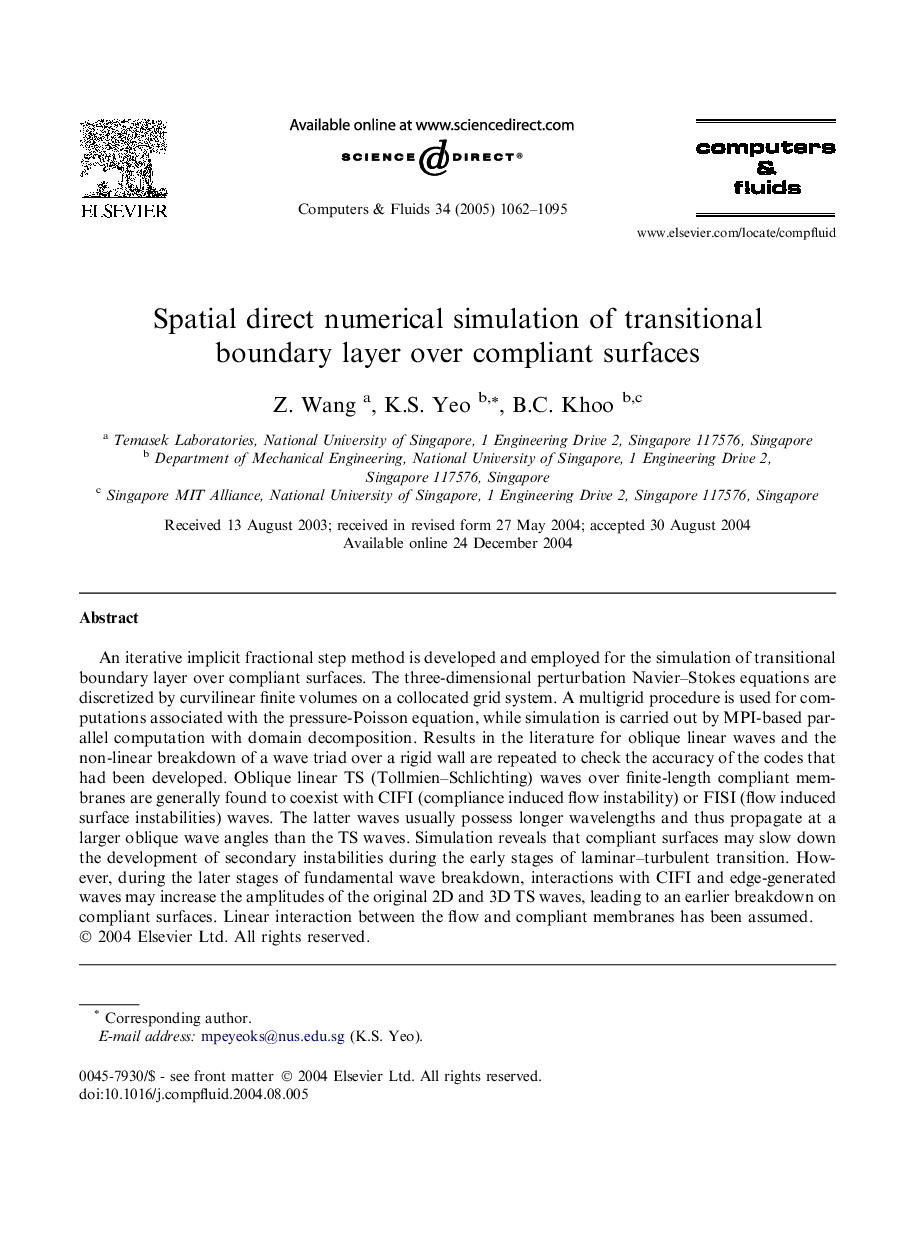| Article ID | Journal | Published Year | Pages | File Type |
|---|---|---|---|---|
| 10415500 | Computers & Fluids | 2005 | 34 Pages |
Abstract
An iterative implicit fractional step method is developed and employed for the simulation of transitional boundary layer over compliant surfaces. The three-dimensional perturbation Navier-Stokes equations are discretized by curvilinear finite volumes on a collocated grid system. A multigrid procedure is used for computations associated with the pressure-Poisson equation, while simulation is carried out by MPI-based parallel computation with domain decomposition. Results in the literature for oblique linear waves and the non-linear breakdown of a wave triad over a rigid wall are repeated to check the accuracy of the codes that had been developed. Oblique linear TS (Tollmien-Schlichting) waves over finite-length compliant membranes are generally found to coexist with CIFI (compliance induced flow instability) or FISI (flow induced surface instabilities) waves. The latter waves usually possess longer wavelengths and thus propagate at a larger oblique wave angles than the TS waves. Simulation reveals that compliant surfaces may slow down the development of secondary instabilities during the early stages of laminar-turbulent transition. However, during the later stages of fundamental wave breakdown, interactions with CIFI and edge-generated waves may increase the amplitudes of the original 2D and 3D TS waves, leading to an earlier breakdown on compliant surfaces. Linear interaction between the flow and compliant membranes has been assumed.
Related Topics
Physical Sciences and Engineering
Engineering
Computational Mechanics
Authors
Z. Wang, K.S. Yeo, B.C. Khoo,
